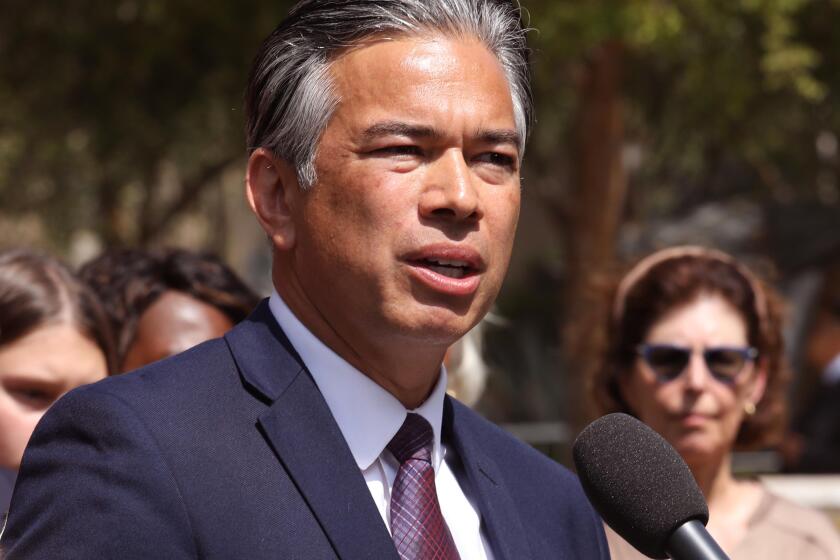PHOTOS: Haiti art museum damage
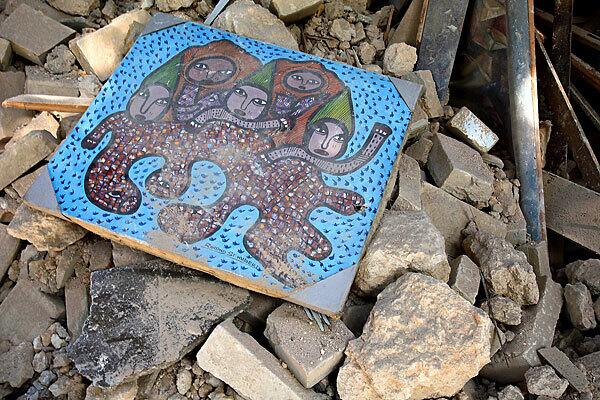
A painting lies in the ruins of the Centre d’Art, the birthplace of the modern Haitian art movement, in Port-au-Prince. (Brian Vander Brug / Los Angeles Times)
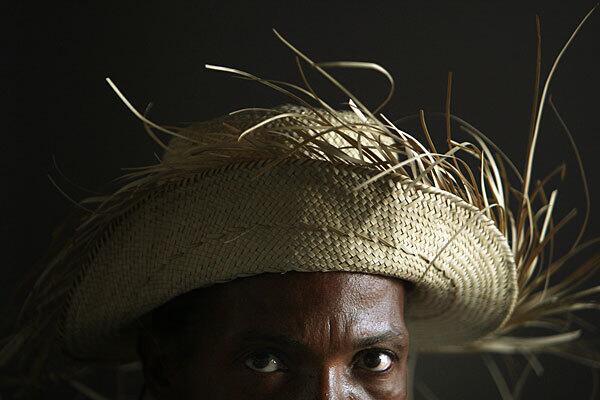
Haitian artist Jean Joseph Jean Baptiste at the Monnin Gallery in Petionville. (Brian Vander Brug / Los Angeles Times)
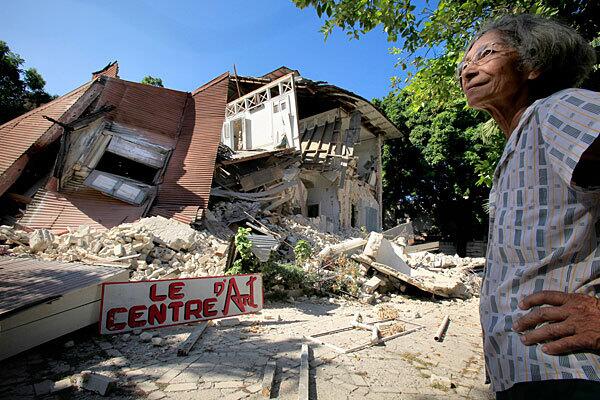
Artist Maritou Chenet looks over what is left of the Centre d’Art museum in Port-au-Prince. The building was destroyed in the quake, and some artworks were crushed or exposed to the elements. (Brian Vander Brug / Los Angeles Times)
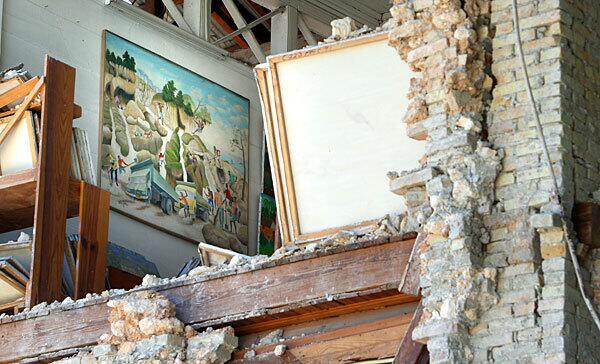
Paintings can be seen through a hole in a wall at the Centre d’Art in Port-au-Prince, whose facade was sheared off in the 7.0 earthquake. (Brian Vander Brug / Los Angeles Times)
Advertisement
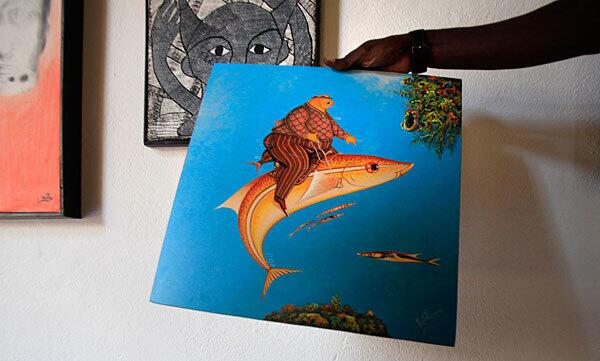
Haitian artist Andre Blaise displays his “Man Riding a Fish” painting at Monnin Gallery in the affluent suburb of Petionville. (Brian Vander Brug / Los Angeles Times)
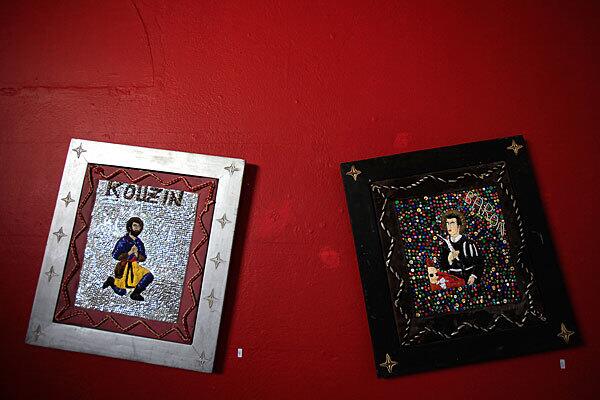
Colorful artworks hang, crooked but not damaged, in the Monnin Gallery in Petionville. (Brian Vander Brug / Los Angeles Times)
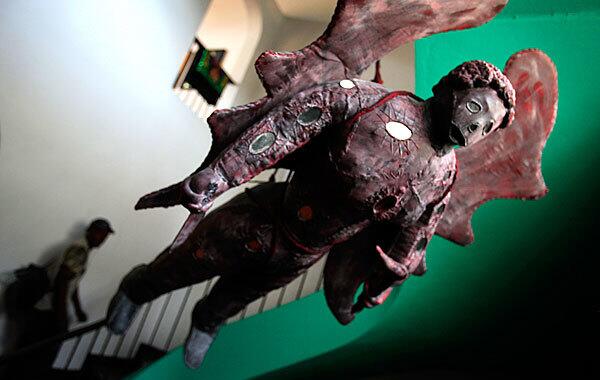
A Bizango figure, representing an enforcer of the high priests of voodoo, hangs in the Monnin Gallery. (Brian Vander Brug / Los Angeles Times)
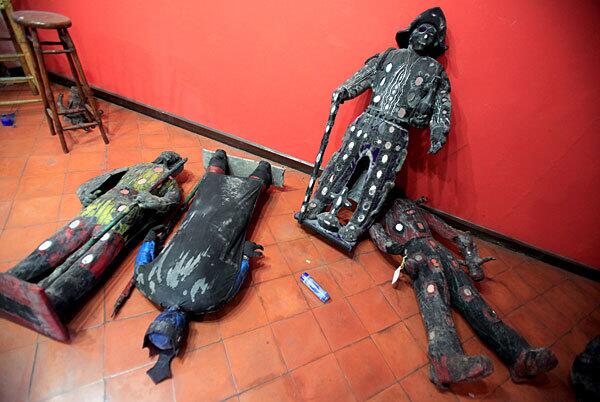
Bizango statues lie on the floor at the Monnin Gallery in Petionville, after being toppled by the Jan. 12 quake. (Brian Vander Brug / Los Angeles Times)
Advertisement
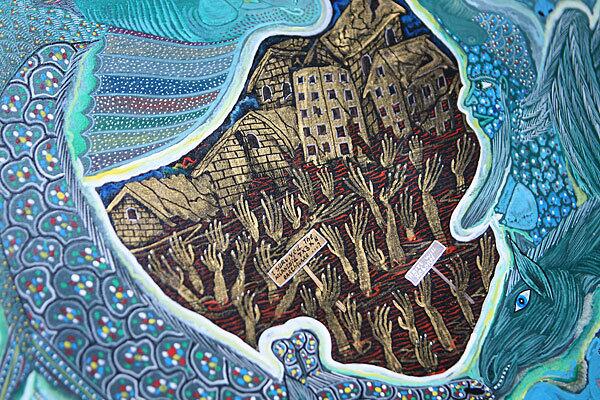
Haitian artist Frantz Zephirin has already incorporated the earthquake in his art, as seen in his newest creation. “I wanted to show Haitians in a sea of blood,” he said. But amid the hands in the sea of blood, Zephirin has painted this: “Haiti will reborn.” Another painting by Zephirin, done before the quake, graces the cover of this week’s New Yorker. (Brian Vander Brug / Los Angeles Times)



